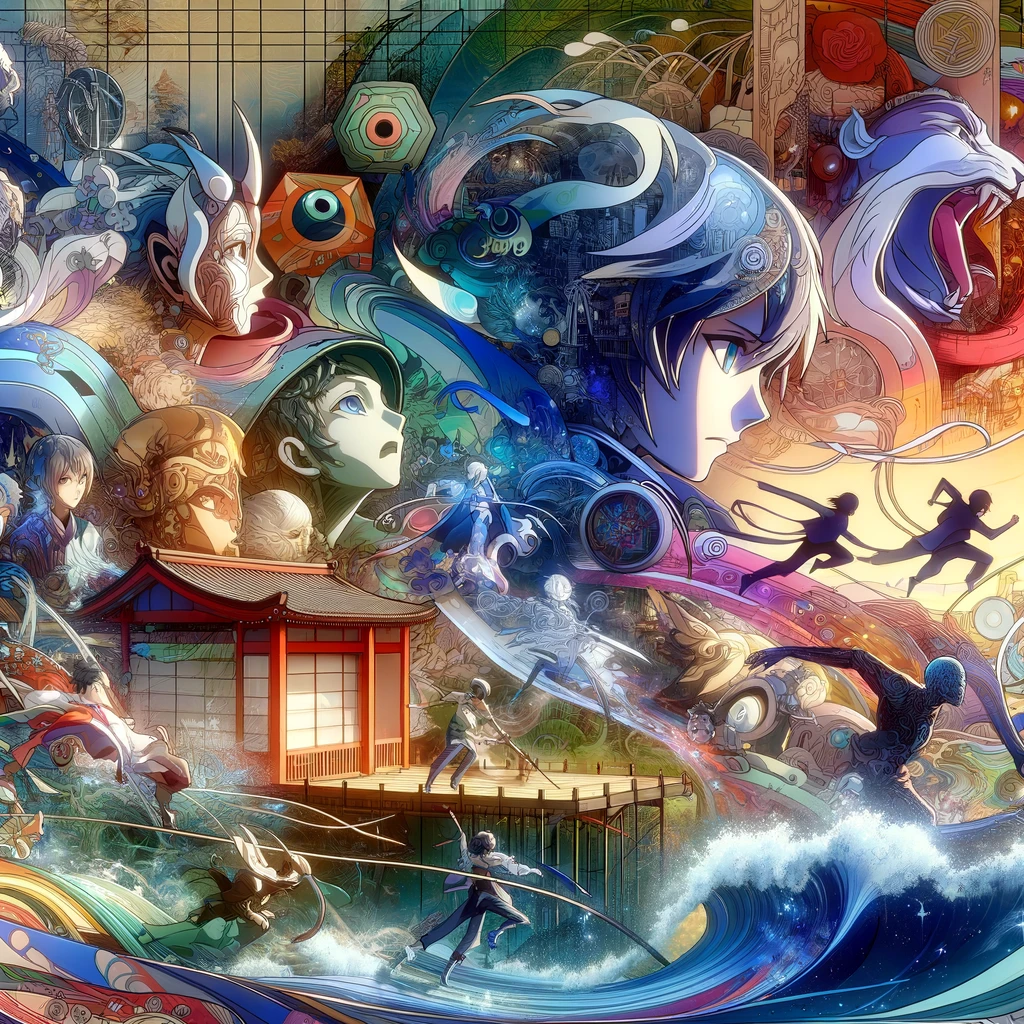Introduction
Anime, Japan’s iconic style of animation, has captivated audiences worldwide with its distinctive approach to storytelling. Unlike its Western counterparts, anime boasts a myriad of unique narrative techniques, character development intricacies, and thematic depths that resonate with a diverse audience range. This article delves into the core storytelling elements that set anime apart, exploring how these methods engage viewers and create memorable, impactful narratives.
Visual Storytelling and Aesthetic Nuances
Anime stands out for its exceptional use of visual storytelling. The art style itself, characterized by vivid colors, exaggerated facial expressions, and dynamic motion, conveys emotions and narratives in ways words alone cannot. Backgrounds and settings are often painstakingly detailed, offering viewers a sense of immersion into the anime’s world. Furthermore, symbolic imagery—such as cherry blossoms representing transience or the changing seasons mirroring characters’ growth—is frequently employed to add layers of meaning to the story.
Narrative Structure and Pacing
Anime storytelling often eschews traditional Western narrative structures, opting instead for layered, complex plots that unfold over many episodes or even multiple seasons. This allows for detailed character development, intricate world-building, and slow-burn plotlines that reward patient viewers. Flashbacks and nonlinear storytelling are commonly used techniques, providing deeper context to characters’ motivations and altering the audience’s perception of the narrative as it progresses.
Character Complexity and Development
Characters in anime are renowned for their depth and complexity, often exhibiting a blend of strengths, weaknesses, vulnerabilities, and contradictions. Even antagonists are given rich backstories and motivations, blurring the lines between heroes and villains. The character arcs are significant, with individuals experiencing substantial growth, facing moral dilemmas, and undergoing personal transformations that are both relatable and profoundly human.
Embracing a Multitude of Genres
Anime’s storytelling is genre-defying, seamlessly blending elements from science fiction, fantasy, romance, horror, and more. This eclectic mix allows storytellers to explore a vast array of themes, from existential questions and social commentary to intimate explorations of love, friendship, and identity. The genre fluidity of anime also means that it can cater to a wide range of audiences, offering something for every viewer, regardless of age or background.
Cultural Context and Thematic Depth
Anime often incorporates themes and narratives deeply rooted in Japanese culture, tradition, and philosophy, providing a unique lens through which to explore various universal themes. Concepts like mono no aware (the awareness of the impermanence of things) and the integration of Shinto or Buddhist beliefs into storytelling enrich the narrative, offering audiences a glimpse into Japanese thought and values while addressing universal questions of life, death, and existence.
Emotional Resonance and Impact
Perhaps one of the most distinguishing features of anime’s storytelling is its ability to evoke strong emotions. The combination of art, music, narrative, and character development creates a profoundly immersive experience, often leaving viewers with lasting emotional impacts. The storytelling is unafraid to explore dark or mature themes, providing a space for reflection, catharsis, and, ultimately, a deep connection to the content.
Conclusion
Anime’s storytelling techniques stand as a testament to the medium’s innovation, depth, and cultural richness. Through its unique blend of visual artistry, narrative complexity, character depth, and thematic exploration, anime continues to push the boundaries of traditional storytelling, offering audiences worldwide stories that are not only entertaining but also profoundly meaningful. As anime’s popularity continues to soar globally, its storytelling techniques remain a pivotal aspect of its enduring appeal, resonating with viewers across cultural and linguistic boundaries.
